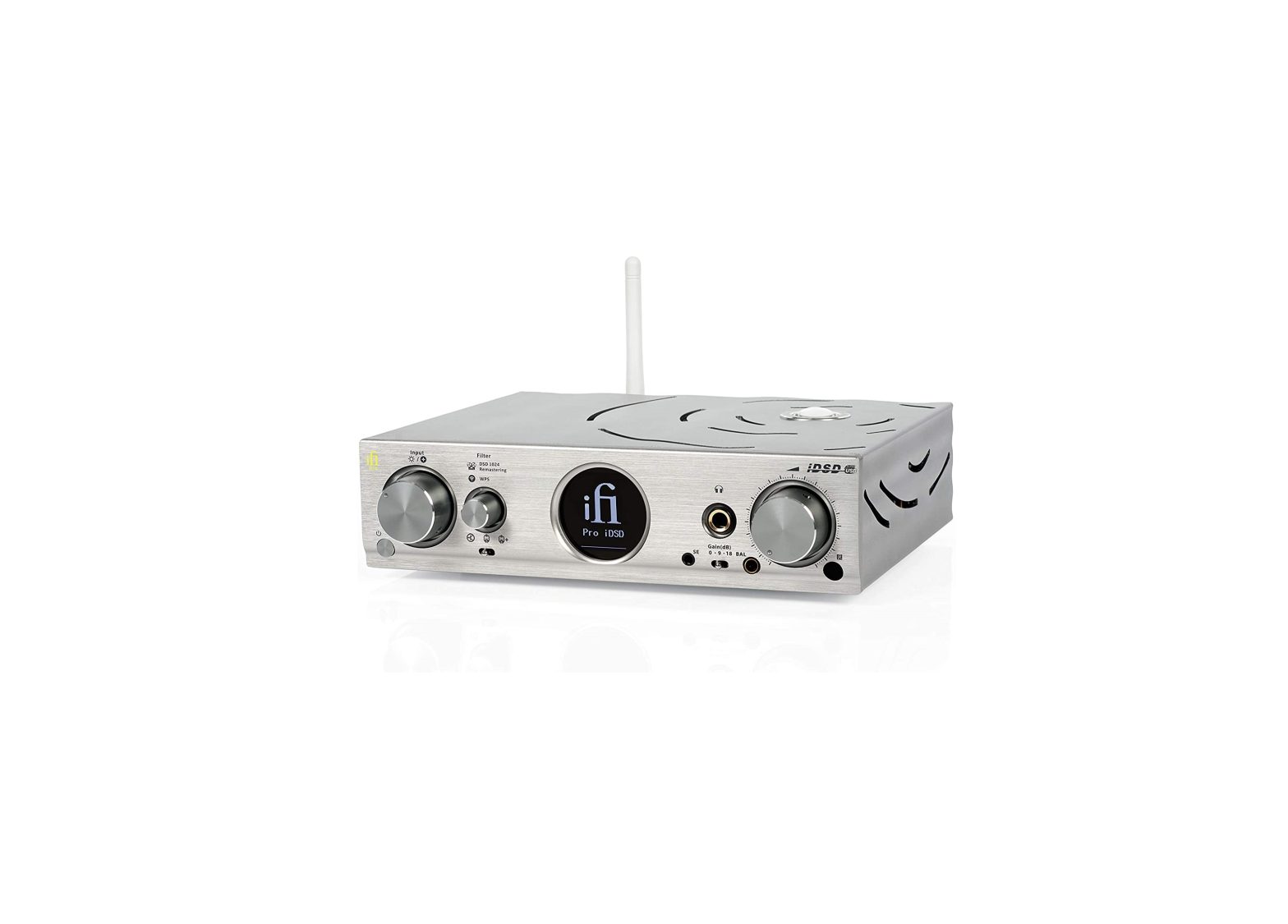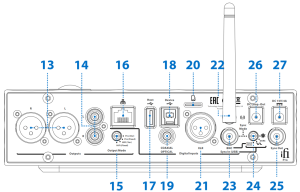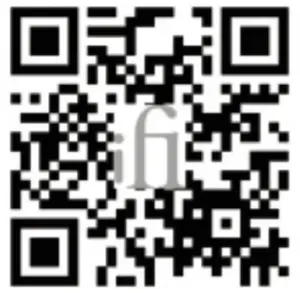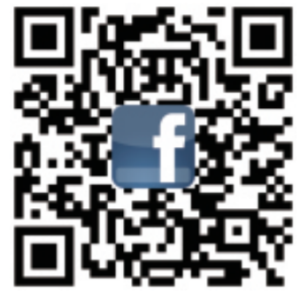DSD1024 Pro iDSD DAC and Headphone Amplifier
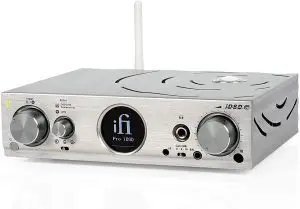
Thank you for purchasing this Pro series iDSD.
Features
- Quad-Core Burr Brown MultiBit/DSD hybrid DAC supporting DSD1024 and PCM768kHz
- Studio grade DSD1024 remastering (Crysopeia FPGA Digital Engine)
- Wireless DLNA/Airplay™/Ethernet Hi-Res Playback
- User-selectable analogue stage: Tube or Solid-State
- Master Quality Authenticated (MQA) playback
- Global Master Timing femto grade clock system with external clock input options
- Five filters: Bit-Perfect/Bit-Perfect+/Gibbs Transient Optimized/Apodising /Transient Aligned
- Fully discrete passive LC analogue filtering
- Zero Jitter Memory Buffer and Galvanic Isolation for all inputs
- Discrete headphone/line amplifier
- Balanced inputs and outputs
- Galvanic isolated ultra-quite power supply with super capacitors
Overview
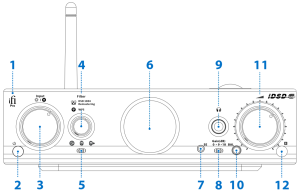
- LED indicator
- Power
- Input selector {incl. Brightness/Polarity}
- Filter selector {incl. DSD Remastering/WPS}
- Output mode: Solid-State/Tube/Tube+
- OLED display
- Single-Ended 3.5mm headphone socket
- Headphone gain selection: OdB/9dB/18dB
- Headphone 6.3mm socket
- Balanced 4.4mm headphone socket
- Analogue volume control (Line and Headphone outputs)
- IR remote control sensor

- XLR Balanced signal outputs
- Single-Ended signal outputs
- Output selector: Hi Fi Fixed/Hi Fi Variable/Pro Fixed/Pro Variable
- Ethernet
- Host USB
- Device USB
- Coaxial/Optical Digital Input
- Micro SDHC
- XLR Digital Input
- Wi-Fi antenna
- BNC Digital Input
- Clock Sync mode: Atomic/DARS/Word/Standalone
- Clock Sync output
- DC loop out supply
- DC power supply connectionAnalogue OutputsDigital InputsClock
- LEDGreen: Warming UpWhite: Solid-State ModeOrange: Tube ModeRed: Protection Mode
- Standby/Power
- Input selectorUse the selector to ’cycle’ through the following input options:– WiFi/Ethernet/Hard Disk/Micro SDHC– Device USB (connect to a computer)– Coaxial/Optical Digital Input– XLR Digital Input– BNC Digital InputAlso available via the input selector are:– Brightness (press to adjust)– Polarity (hold to adjust)
- Digital filters selectionThe Pro iDSD offers the following three choices of digital processing:i) Direct – Bit-PerfectBoth PCM and DSD signals are not processed in any way.For PCM this is effectively what is sometimes called “non-oversampling” or “zero-oversampling.”For DSD it means the le is retained in the original DSD format and directly converted to analogue without any digital processing.ii) PCM – Up samplingIn this case PCM is up-converted to 16 x PCM (705.6/768kHz) using a choice of digital filters.The following five digital filters are available:
‘Bit-Perfect’ No digital filtering is applied, one tap ‘Bit-Perfect+’ No digital filtering is applied, one tap, SINC roll-off is corrected ‘Gibbs Transient Optimized’ Minimum filtering, no pre-ringing, minimum post ringing, 32 taps Apodising’ Modest filtering, no pre-ringing, modest post ringing, 128 taps ‘Transient Aligned’ Max filtering, max pre-ringing, maximum post-ringing, 16,384 taps The digital filters selections can be made ‘on the y’ to suit the listener’s preferences.Each filters effects a different time-domain and frequency-domain performance.DSD remains completely unprocessed.iii) DSD – RemasteringIn this case incoming audio (except DSD512) is converted to either DSD512 or DSD1024 as selected,using the filters selected (including Bit-Perfect, meaning no digital filtering is applied).
All these digital processing options apply to ALL sources, including the network audio bridge and AES-EBU & S/PDIF inputs.Inputs other than USB are currently limited to maximum sample rates of 192kHz PCM and DSD64 via DoP.Please try all the different options to see which you enjoy the most.Full Galvanic IsolationAll inputs are galvanically-isolated (including USB). The USB input is self powered and does not draw power from the USB bus. Therefore, the USB section is quite impervious to aftermarket add-ons or tuning accessories.WPSFor ease of use, simultaneously use the WPS button on the Pro iDSD and the router so that they can both complete the handshake to pair up.
- Output section mode: Solid-State / Tube / Tube+The Pro iDSD (just like the Pro iCAN) is a one-of-a-kind product that is able to switch between:
 ‘Solid-State’ – a purely solid-state J-FET based circuit of fully-discrete Class A topology.
‘Solid-State’ – a purely solid-state J-FET based circuit of fully-discrete Class A topology. ‘Tube’ – the J-FET circuitry is switched to an all-valve Class A section based on 2 x GE5670.
‘Tube’ – the J-FET circuitry is switched to an all-valve Class A section based on 2 x GE5670. ‘Tube+’ reduces available negative feedback to a minimum. As a result, a greater amount of the tubes natural harmonic distortion is produced (even order harmonics dominate).When switching, there is a momentary pause as the circuit switches over.
‘Tube+’ reduces available negative feedback to a minimum. As a result, a greater amount of the tubes natural harmonic distortion is produced (even order harmonics dominate).When switching, there is a momentary pause as the circuit switches over.
The audio circuit is a development of iFi’s revolutionary ‘TubeState’ design. It is fully-discrete, fully balanced with either tube or J-FET input switchable, bipolar second stage and mosfet-buffered bipolar Class A power stage (with Class AB for low impedance headphones and very high levels). The circuit is fully DC coupled.
Please note that, due to the wear on the cathode of tubes after an extended period of time in solidstate mode, the tube heater element will automatically power down and turn off the tubes. If the tube heater is shut off when switching to tubes, they will need to warm-up again (as if the whole Pro iDSD itself was powered up from cold). Music will continue to play via the solid state section until the tubes are ready.
This ensures maximum longevity for the NOS General Electric 5670
- OLED display
- Headphone 3.5mm single-ended socket3.5mm with TRRS iFi S-Balanced.
- Headphone gain selection: 0dB/9dB/18dBAlways start from 0dB and then increase the gain level to attain an enjoyable and comfortable level of volume from the headphones.Warning: at the outset do not use excessive gain, otherwise damage to hearing or connected headphones may ensue. AMR/iFi audio is not responsible for any damage/injury from misuse.
- Headphone 6.3mm socket
- Balanced 4.4mm headphone socket4.4mm TRRS Balanced headphones.Tip: if possible, always use balanced headphones to take full advantage of the true balanced nature of the Pro iDSD circuitry
- Analogue volume controlAt normal listening levels, the volume control should be around the 12 o’clock position. Increase the gain level to enjoy a higher listening level.
- Infrared remote receiverWindow for infrared remote receiver signal.Rear of Pro iDSDAnalogue Outputs
- XLR Balanced signal outputsBalanced signal output to an amplifier.
- Single-Ended signal outputsSingle-Ended signal output to an amplifier.
- Output selector: HiFi Fixed/HiFi Variable/Pro Fixed/Pro VariableIt is possible to set the signal output to different levels for home or studio use. Industry standard signal output levels apply; balanced output is ~4.6V (HiFi Fixed mode) and ~11.2V (Pro Fixed mode)-Variable is adjusted via the front volume control. With the volume control at maximum the same signal levels listed above are achieved.Digital Inputs
- EthernetFor a wired connection directly from a router or Network Attached Storage (NAS) source. Using the MUZO Player app stream Spotify (incl. Connect), TIDAL, Napster, QQ Music and many more.
- Source Host USB ‘Type A’For connecting an external hard disk drive (HDD, FAT32*), USB memory stick or similar to play music: 1) Drive must not draw large amounts of power (meaning mechanical HDD should be self powered). 2) Drive must be formatted as FAT32(*
- Device USB ‘Type B’For connecting a PC host such as a laptop or a server.
- Coaxial/Digital inputFor connecting an S/PDIF source such as a high-end CD transport.
- Micro SDHCInsert a Micro SDHC card (FAT32*) with music les, up to 128GB is supported. All les from MP3 to FLAC to DSD(**) can be played directly through the Pro iDSD via the MUZO Player app.* FAT32 – formatting past the Windows 32GB limit10 * FAT32 – formatting past the Windows 32GB limit 1) The Pro iDSD platform reads FAT32 only (not NTFS/ExFat/HPF+)2) OS X formats FAT32 regardless of size.3) Windows OS by itself is unable to format a drive above 32GB. Third party utilities are required.4) e.g. “FAT32 Formatter” is a basic portable GUI tool that can format drive larger than 32GB.http://www.ridgecrop.demon.co.uk/index.htm?guiformat.htm** DSD les must be encoded as so-called DoP-FLAC Files
- AES/EBU (XLR) digital inputFor connecting an XLR single link source such as a high-end CD transport or a Digital Audio Workstation (DAW)
- Wi-Fi antennaUsing the MUZO Player app, connect the Pro iDSD to the local WiFi system to stream Spotify, TIDAL, Napster, QQ Music and many more.It is also possible to enjoy Airplay network audio playback from iPhone, iPad and Mac computers. Wirelessly, just about every music format up to 192kHz/32-Bit from MP3 to FLAC to DSD can be played directly through the Pro iDSD via the MUZO Player app or suitable server software.
- BNC digital inputBNC multifunction input (S/PDIF/AES3id) such as from a high-end CD transport. For clock synchronization in recording studios, the Pro iDSD supports AES3id based DARS (Digital Audio Reference Signal) according to AES11.It is equally possible to use an atomic reference clock (at least Sanford Research Systems PERF10 should be used) to further elevate the Pro iDSD performance over the internal clock system.Clock
- Clock Synch mode: Atomic/DARS/Word/StandaloneIf the Clock Synch mode* is used, please select the correct clock device. Atomic Clock: Connect to an external atomic clock source (10MHz). DARS: Digital Audio Reference Signal, connect to an external DARS clock reference (it is a S/PDIF signal without any actual audio data).Word Clock: LRCLK / WCLK of 12S Signal.Standalone: No external clock source is used.
- Clock Synch outputBNC multifunction Sync Out (DARS out, Word out), selection via Clock Sync mode* switch.
- DC loop out supplyDC loop through for use with other Pro series products (e.g. Pro iCAN).
- DC power supply connection15V/4A DC power input.Tip: Any 9v to 18v DC power source with a minimum of 60VA rating can be used with the Pro iDSD (including vehicular, RV and boat based 12V DC power). We strongly recommend the use of the included iPower Plus 15v. It offers the latest in power supply technology and is better and cleaner than any battery or aftermarket linear power supply.
12 * Clock synchronization instructions:1. Clock synchronization function is only valid when using the USB input.2. When using USB playback:i) When set to 10MHz (Atomic clock), the clock port must receive a 10MHz (9-11MHz) signal.If 10MHz clock is not detected, an error will be displayed and the Pro iDSD will switch back to the internal clock.ii) When set WLCK/DARS, the clock port input should have the following corresponding signals:– When the USB input song frequency is a multiplier of 44100 (44100, 88200, 176400), the sampling rate supported by the clock input is 40100hz – 48100Hz,– When the USB input song frequency is 48000 times (48000, 96000, 192000), the clock input supports sampling rate 44000hz – 52000Hz.Current USB playback sampling rate is X– If X% 44100 == 0, the supported input sampling rate: (44100-4000 / (X / 44100)) ~ (44100 + 4000 / (X / 44100))– If X% 48000 == 0, the supported input sampling rate: (48000-4000 / (X / 48000)) ~ (48000 + 4000 / (X / 48000)) – %: remained
Design Notes from the AMR/iFi Research & Development departmentThe Pro iDSD is an all-out assault on the state-of-the-art and its ground breaking digital engine will be used across the next generation of iFi products.
1) DAC sectionThe Pro iDSD uses a quad ‘core’ of iFi audio’s bit-perfect DSD & DXD DAC by Burr-Brown in a custom ‘interleaved’ configuration. A total of eight pairs (four for each channel) of differential signals are used and mixed.
While the Pro iDSD does include an FPGA for digital filter duties, the FPGAs themselves do not perform d/a conversion. There are always external d/a sections, with a limited number of elements. In the Pro iDSD we use four interleaved 64-element converters, to give a total of 256 element DAC per channel, manufactured to the highest level of precision. Discrete DACs added can neither offer those elements’ numbers nor the accuracy required.
All signals to the DACs are re-clocked with the low-jitter Global Master Timing® derived master clock from the AMR DP-777.
2) Digital ProcessingBitperfect or UpsampledAll digital processing is bit-perfect, without employing ASRC or up conversion unless digital filters embedded the Crysopeia FPGA remastering engine are explicitly selected. Divergent digital filters (including bit-perfect mode without digital filtering) are selectable and operate in synchronous mode.
The Pro iDSD uses the second generation XMOS XU216 X-Core 200 Series 16-core processor with a maximum of 2,000 MIPS (two billion instructions per second) calculation power in dual-issue mode as USB interface.
The X-Core 200 handles decoding of signals from all Inputs, be it USB (up to 768kHz/DSD512), AES/EBU or S/PDIF (up to 192kHz/24Bit) and WiFi/network/mass-storage (up to 192kHz/32Bit).
Hi-res Network AudioIn addition to traditional inputs, the Pro iDSD integrates a WiFi/network playback system, with built-in Spotify and Tidal (and other streaming services), wide protocol support including Airplay and USB memory/HDD/SD card playback to make a full standalone streamer/network audio player with 32 bit/192kHz & DSD64 support.
The following playback options are available with the Pro iDSD:
- Airplay network audio playback from iPhone, iPad and Mac computers
- DLNA network audio playback from smartphones, tablets and Windows/Linux computers
- Playback from a hard disk drive (HDD), USB memory or SDHC memory card
- Playback from Network Attached Storage (NAS)
- Streaming playback includes Spotify, TIDAL, Napster, QQ Music and others
- The Pro iDSD includes MQA(*) technology, which enables you to play back MQA(*) audio les and streams, delivering the sound of the original master recording.
 The Pro iDSD includes MQA technology, which enables you to play back MQA audio les and streams. ‘MQA’ or ‘MQA.’ indicates that the product is decoding and playing an MQA stream or le, and denotes provenance to ensure that the sound is identical to that of the source material. ‘MQA.’ indicates it is playing an MQA Studio le, which has either been approved in the studio by the artist/producer or has been verified by the copyright owner.MQA and the Sound Wave Device are registered trade marks of MQA Limited.© 2016
The Pro iDSD includes MQA technology, which enables you to play back MQA audio les and streams. ‘MQA’ or ‘MQA.’ indicates that the product is decoding and playing an MQA stream or le, and denotes provenance to ensure that the sound is identical to that of the source material. ‘MQA.’ indicates it is playing an MQA Studio le, which has either been approved in the studio by the artist/producer or has been verified by the copyright owner.MQA and the Sound Wave Device are registered trade marks of MQA Limited.© 2016
14 *MQA 1) Listen to MQA (Master Quality Authenticated) les straight out of the box.2) For MQA tracks, simply connect to Tidal and check the options to stream MQA.3) Visit mqa.co.uk for more information.
Zero Jitter Memory Buffer for all inputsData for all inputs is sent to a large ‘dynamic’ memory buffer, where it is de jittered to eliminate any transmission of source jitter to the DAC output. The memory buffer data is then re-clocked by the low-jitter Global Master Timing® clock, which also drives the X-Core 200 & FPGA engine.
Studio Grade DSD1024 Remastering
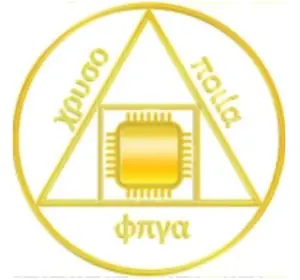
While the X-Core 200 is optimal for USB audio, AES/EBU/S/PDIF, MQA,DSD etc. decoding, it is not the best platform for DSP, digital filtering and PCM-to-DSD conversion.
The other half of the digital processing is carried out by the Crysopeia FPGA engine. It handles digital filtering and PCM-to-DSD remastering up to DSD1024. We believe that FPGA excels in upsampling and digital filtering duties.
On-board hardware upsampling allows us to not only overcome the current DSD512 USB limitation, but also to implement multiple filtering optimized for specific time-domain behavior related to both stages; digital and analogue. This level of optimization is simply not possible in generic software up conversion (as found in i.e. Foobar 2000).
There are five filters available:
| ‘Bit-Perfect’ | No digital filtering is applied, one tap |
| ‘Bit-Perfect+’ | No digital filtering is applied, one tap, SINC roll-off is corrected |
| ‘Gibbs Transient Optimized’ | Minimum filtering, no pre-ringing, minimum post ringing, 32 taps |
| ‘Apodising’ | Modest filtering, no pre-ringing, modest post ringing, 128 taps |
| ‘Transient Aligned’ | Max filtering, max pre-ringing, maximum post-ringing, 16,384 taps |
Full Galvanic IsolationAll inputs are galvanically-isolated (including USB). The USB input is self-powered and does not draw power from the USB bus. The USB section is quite impervious to aftermarket add-ons or tuning accessories. The isolation barrier is placed not in the inputs but instead between the relatively noisy digital processing section and the clock / relocked / DAC section, so not only USB related but all digital noise is isolated.
Cutting-Edge S/PDIFThe S/PDIF inputs use the technology derived from the AMR DP-777; a brand new solid-state HD-VDi implementation, memory buffer and the Global Master Timing® clock system. Given this extreme attention to jitter reduction, the S/PDIF inputs benefit little from additional tweaks or tuning gizmos.
External Clock options & SynchronizationFor the purpose of synchronization in recording studios, the Pro iDSD supports AES3id based DARS (Digital Audio Reference Signal) according to AES11. And if you happen to have a really good atomic clock (of Sanford Research Systems PERF10 quality or higher), it can be used to further elevate the Pro iDSD’s already impressive internal clock system performance. This is very much an over-specified approach, yet the iFi flagship deserves this feature in order to be as future-proof as possible.
3) Passive Filtering and Discrete Analogue stageEach d/a converter operates in the ‘voltage output mode’, giving >119dB dynamic range. All filtering is passive. A fully-balanced 3rd order capacitor/inductor/capacitor filter is used to remove ultrasonic noise directly after the d/a conversion rather than active, feedback-based circuits. Active filters struggle with the amount of ultrasonic noise and RFI they have to handle and at a few 100kHz they often lose the ability to filter noise at all, which is precisely where a lot of it is present. Passive CLC circuitry in the Pro iDSD provides the correct filtering well into the MHz region, so that the follow-on analogue stage is not required to handle ultrasonic noise and RFI originating within the DAC processes. An all-analogue six-track Japanese Alps potentiometer is to be found directly after DAC and filter stages. It can be bypassed if volume control is not required. The actual analogue circuitry is more precisely a line/headphone driver stage. First seen in the Pro iCAN, it’s fully balanced and 100% discrete, direct-coupled (without coupling capacitors) and tube/solid-state user-selectable. Our design is not just op-amp based discrete but radically different – pure Class A topology. It was inspired by exceptional sounding, legendary studio equipment.
4) Power SuppliesAll incoming DC is converted to a high-frequency waveform and then rectified and filtered by a choke input capacitor filter (that is straight out of classic tube design, brought up to the latest 21st century technology).
This produces a first-level DC bus from which all further voltages are derived. This circuit also generates a galvanically-isolated power supply voltage for the USB input circuitry.
The digital section is powered by a bank of ELNA Dynacap DZ (TM) super capacitors of 6.6 Farad (6,600,000uF) value in total. ELNA Dynacap DZ (TM) super capacitors have around 400x lower internal impedance (in comparison to similar products of regular grade) and are used to avoid the typical drawback of the very high internal impedance of common ‘super capacitors’.
Individual low-noise TI LDO regulators with local LC filtering provide the final low-noise power for all individual digital sections. A total of six individual regulators cover clock, S/PDIF input and the digital section. The analogue side of the DAC is supplied with ultra-low noise super-regulators based on iFi audio’s custom ultra-low noise OV2028 operational amplifier.
The USB input section has its own separate power management system with multiple regulators and filtering operating from the galvanically-isolated voltage generated to power this section.
Higher voltages (especially for the tubes) are required for the analogue stage, which in effect operates on 60V rail providing massive potential dynamic range. These are generated from the main DC bus and are filtered via multiple inductor/capacitor stages based on great Elna Silmic capacitors.
Every section in the Pro iDSD has received massive attention to detail. Classic, very low-noise design techniques found in tube equipment have been combined with 21st century tech to deliver extreme performance.
Specifications
| Sample rates: | PCM up to 768kHzDSD up to 49.152MHz (DSD 1024)MQA up to 384/352.8kHzDXD and double-speed DXD (2xDXD) |
| Inputs: | USB (required for DSD, DXD and sample rates above 192KHz)AES3 (XLR – single link)S/PDIF (coaxial/optical combo)BNC multifunction (S/PDIF in or sync input) |
| Outputs: | Balanced XLR at 4.6V (+15.5dBu – HiFi) or 10V (+22dBu – Pro)Single-Ended RCA at 2.3V (HiFi) or 5V (Pro)Headphones 6.3mm & SE 3.5mm jack at 0.55V/2.1V/5V (Output impedance < 1 Ohm)Headphones BAL 4.4mm jack at 1.13V/4.6V/10V (Output impedance < 2 Ohm)Headphones out 1,575mW RMS x 2 @ 64 Ohm, 4,200mW max. x 2 @ 16 Ohm |
| Volume control: | Balanced (6-gang) Alps potentiometer, motorised with IR remote controlXLR/RCA outputs can be selected as xed level or adjusted6.3mm headphone jack is always adjusted |
| Other Functions: | Various digital and analogue filters can be selected for DSD and PCM up to 384KHz |
| PCM Filters: | Bitperfect | 44.1 – 192kHz, always used for 352.8 – 768kHz |
| Bitperfect + | 44.1 – 96kHz | |
| Gibbs Transient Optimized | 44.1 – 384kHz | |
| Apodising | 44.1 – 384kHz | |
| Transient Aligned | 44.1 – 384kHz | |
| DSD filters | xed 3rd order analogue filter @ 80kHz with correction for DSD’s -6dB gain | |
| Gain (headphone section): | user-selectable: 0dB, 9dB and 18dB | |
| Dynamic range: | 119dBA (solid-state, PCM, -60dBFS) | |
| Output power | (16Ω, balanced/single-ended): >4,200mW / >1,575mW | |
| Output voltage | DC 9V/6.7A – 18V/3.35A | |
| Input voltage (Pro iDSD): | AC 85 – 265V, 50/60Hz | |
| Input voltage (iPower+): | 213 x 220 x 63 mm 8.4″ x 8.7″ x 2.5″ | |
| Power consumption: | 1980 g (4.37 Ibs) | |
| Dimensions | 213 x 220 x 63 mm 8.4″ x 8.7″ x 2.5″ | |
| Weight | 1980 g (4.37 Ibs) |
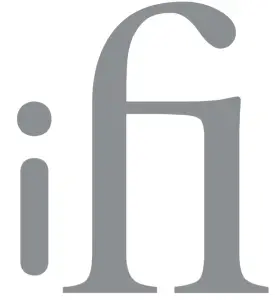
Balmoral Lodge,139-141 Cambridge Road, Churchtown, Southport, PR9 7LN. UKwww.i-audio.com
References
[xyz-ips snippet=”download-snippet”]

